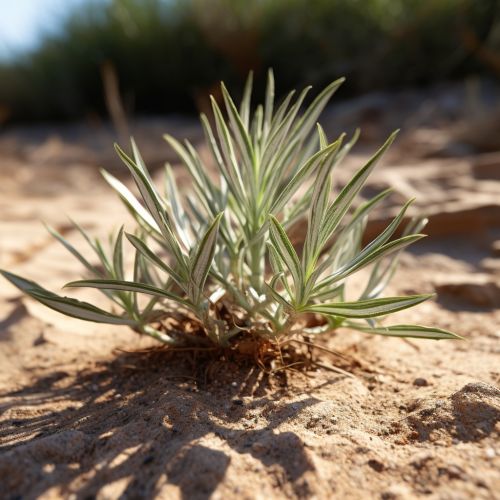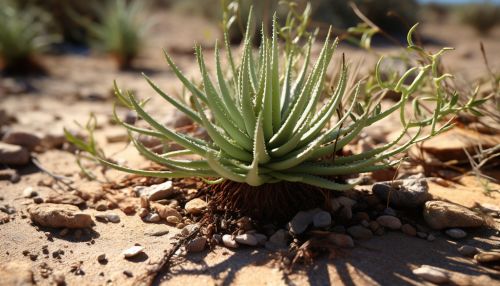Xerophytes
Introduction
Xerophytes are a category of plants that have adapted to survive in environments with little water, such as deserts and ice- or snow-covered regions. They have developed a range of physical and behavioral adaptations to conserve water, reduce water loss, and survive in extreme conditions. This article will delve into the various aspects of xerophytes, including their classification, adaptations, and ecological significance.


Classification
Xerophytes can be classified into various types based on their adaptations and survival strategies. These include ephemerals, succulents, phreatophytes, and halophytes.
Ephemerals are short-lived plants that complete their life cycle during periods of available moisture, then survive as seeds during dry periods. Succulents store water in their leaves, stems, or roots and often have a waxy coating to prevent water loss. Phreatophytes have long roots that reach deep into the ground to access water sources. Halophytes are salt-tolerant plants that can survive in arid conditions due to their ability to tolerate high salt concentrations in the soil.
Adaptations
Xerophytes have evolved a number of structural, physiological, and behavioral adaptations to survive in arid conditions. These adaptations help them conserve water, reduce water loss, and survive in extreme conditions.
Structural Adaptations
Structural adaptations refer to the physical features of xerophytes that help them conserve water. These include thick cuticles, reduced leaf size, sunken stomata, and the presence of trichomes or hairs on the leaf surface. These features reduce water loss through transpiration, the process by which water is lost from the plant to the atmosphere.
Physiological Adaptations
Physiological adaptations involve changes in the plant's metabolic processes to conserve water. These include the ability to store water in various plant parts, the ability to absorb water rapidly, and the use of Crassulacean Acid Metabolism (CAM) photosynthesis. CAM photosynthesis allows the plant to open its stomata at night, when evaporation rates are lower, and close them during the day, conserving water.
Behavioral Adaptations
Behavioral adaptations refer to the strategies xerophytes use to survive in their environment. These include growing during periods of available moisture and remaining dormant during dry periods. Some xerophytes also have the ability to alter their growth patterns and structures in response to changes in their environment, a phenomenon known as phenotypic plasticity.
Ecological Significance
Xerophytes play a crucial role in their ecosystems. They help stabilize soil and prevent erosion, provide habitat and food for wildlife, and contribute to the biodiversity of their habitats. In addition, they play a role in carbon sequestration, helping to mitigate climate change.
Conclusion
Xerophytes are a fascinating group of plants that have evolved a range of adaptations to survive in some of the harshest environments on Earth. Their ability to conserve water and survive in arid conditions makes them an important component of desert and arid ecosystems. Further research into the adaptations of xerophytes could provide insights into how plants might cope with future climate change scenarios.
